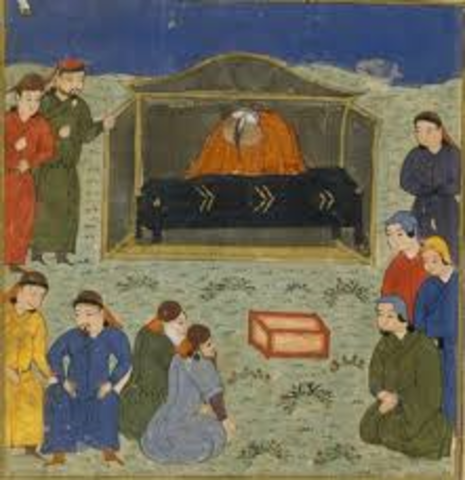

Leaving the Song Dynasty of Southern China until later, he then turned his attention west, and fell upon the Islamic world with an inexplicable fury. Resistance was feeble and the streets of Beijing, so the chroniclers wrote, were soon greasy with human fat. Genghis's first target was the old enemy, China.
.jpg)
Genghis commanded an army of 100,000 of them, supported by up to 300,000 horses. As in Roman times, the ordinary soldier of those days must have been at least as fit as any SAS man today. Imagine doing that repeatedly, at full gallop across open country, while being simultaneously fired upon yourself, and you get some idea what tough nuts the Mongol horsemen were. To draw back the bow, you needed to exert a force equivalent to doing a one-arm pull-up with just three fingers, every time you fired an arrow. And anyway, just how much "creativity" must one exhibit to counterbalance the slaughter of millions? What beneficent laws, what roads, what cities, what poetry and songs did his reign leave the world? The first Mongolian book, The Secret History, was commissioned in 1228 a year after his death. The wars are long over, but the culture wars continue.Įnthralling and colourful as Man's study is, his attempt to rehabilitate Genghis as a kind of romantic, Napoleonic figure, a "paradoxical whirlwind of destructiveness and creativity, ruthlessness and generosity", does not entirely convince. Genghis has even been declared Chinese by the Chinese, at any rate. In this new study, John Man, an adventurous Mongol enthusiast, seeks to paint a fresh portrait of Genghis as someone far more complex than merely the destructive bogeyman of Western, and even more, Islamic, imagination and also to explore the fascinating and bizarre cult that has grown up in Genghis's homeland since his death, where he has attained something like semi-divine status.

'Politically to the right of Genghis Khan" is a daft and meaningless phrase, but it does show that the Mongol warlord continues to occupy a place in the collective folk memory.


 0 kommentar(er)
0 kommentar(er)
